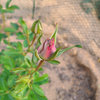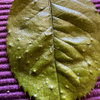Anyone here had an allergy from ficus nitida tree ?
I had a severe allergy attack and was trying to figure out what might have caused it.
I was digging around the ficus nitida tree in backyard at about 8pm, my head brushed agaisnt some branches.
The tree is about 7' tall so the branches are tiny twigs. I had dinner at about 8:30pm, went to bed at 10:30pm.
Woke from my sleep at 11:15pm and felt a severe itch in ears neck and arms it got terribly worse. I took a shower, the warm water probably made it worse. hives (small bumps on skin) started appearing in neck and spread to all of arm and at one point i fell dizzy and kinda collapsed. (iam the kind thats not allergic to anything, never get sick, flu, stomach upset etc).
I drank lot of water and had some painkillers and in 2 hours the hives disappeared. I was fine by morning but neck muscles were sore.
I noticed a small scratch like mark on my neck about 3 quarter inch long. My nails are real short so i didnt cause that scratch. Doc said its too long to be an insect bite and he said it could be from tree branch. The cut on neck doesnt hurt and i never felt anything bite me. But i think a spider could have been one of the culprits.
The other cause the doc said was from something i ate, but usually the food allergies show up instantly and the last thing i ate was at 9:30pm.
I searched on the net on ficus allergy but then doesnt help as anyone can be allergic to anything, including $100 bills. :)
I have often broken branches of nitida tree with hand and had no issues but this might have been the first time the branch scratched skin and had contact with blood.










kazooie
azamigo
Related Professionals
Glassmanor Landscape Architects & Landscape Designers · Middle Island Landscape Architects & Landscape Designers · Frisco Landscape Contractors · Cockeysville Landscape Contractors · Cudahy Landscape Contractors · Fort Payne Landscape Contractors · Harvey Landscape Contractors · Louisville Landscape Contractors · Round Lake Landscape Contractors · Wheat Ridge Landscape Contractors · Aldine Carpenters · Buffalo Carpenters · Lake Worth Carpenters · Sugar Land Carpenters · Windsor CarpentersDave in NoVA • N. Virginia • zone 7A
kazooie
greenlustOriginal Author
Dave in NoVA • N. Virginia • zone 7A
greenlustOriginal Author
brob1969
uummbob
newtoucan
AJBB
newtoucan
tomatofreak
tomatofreak